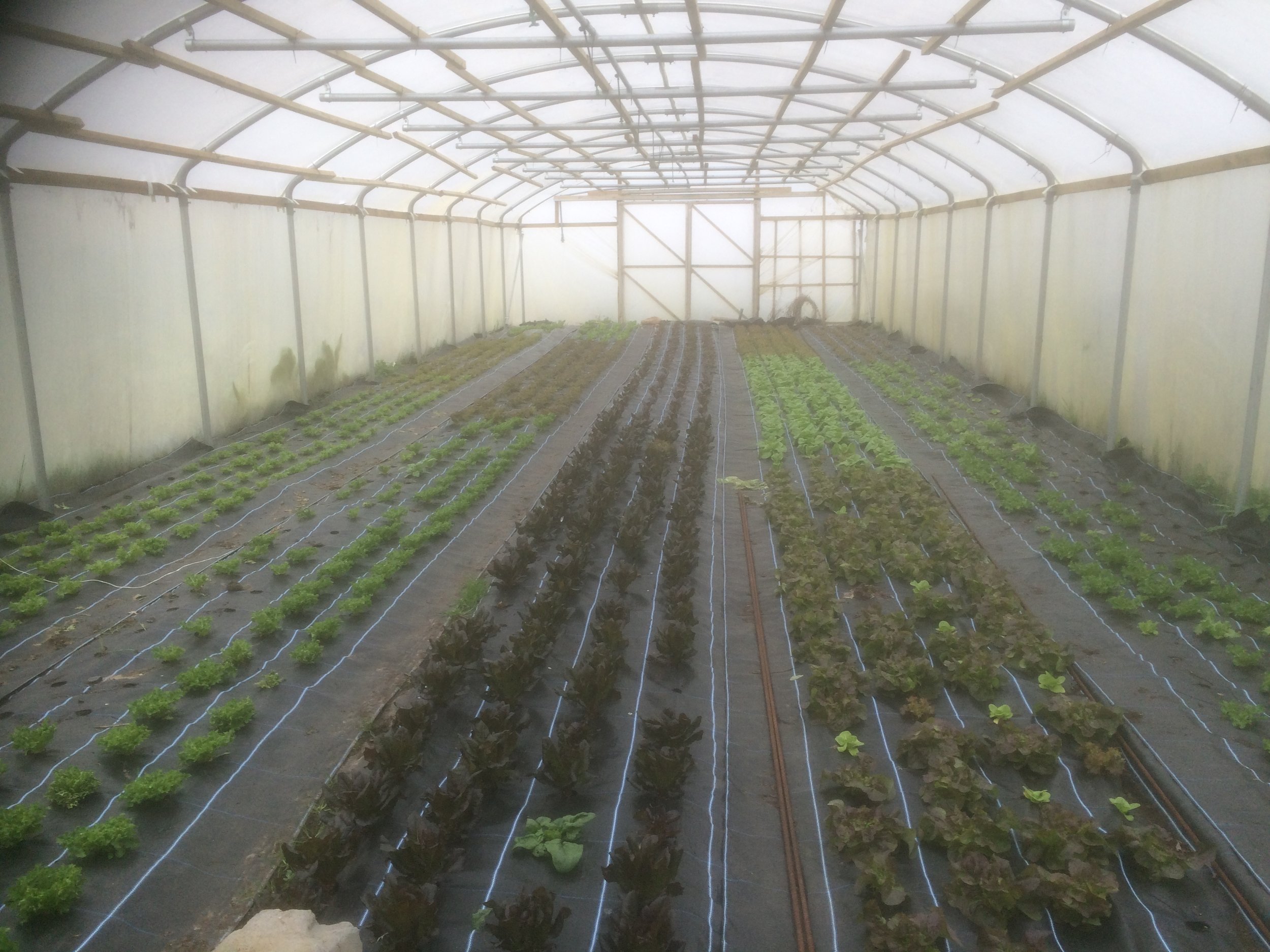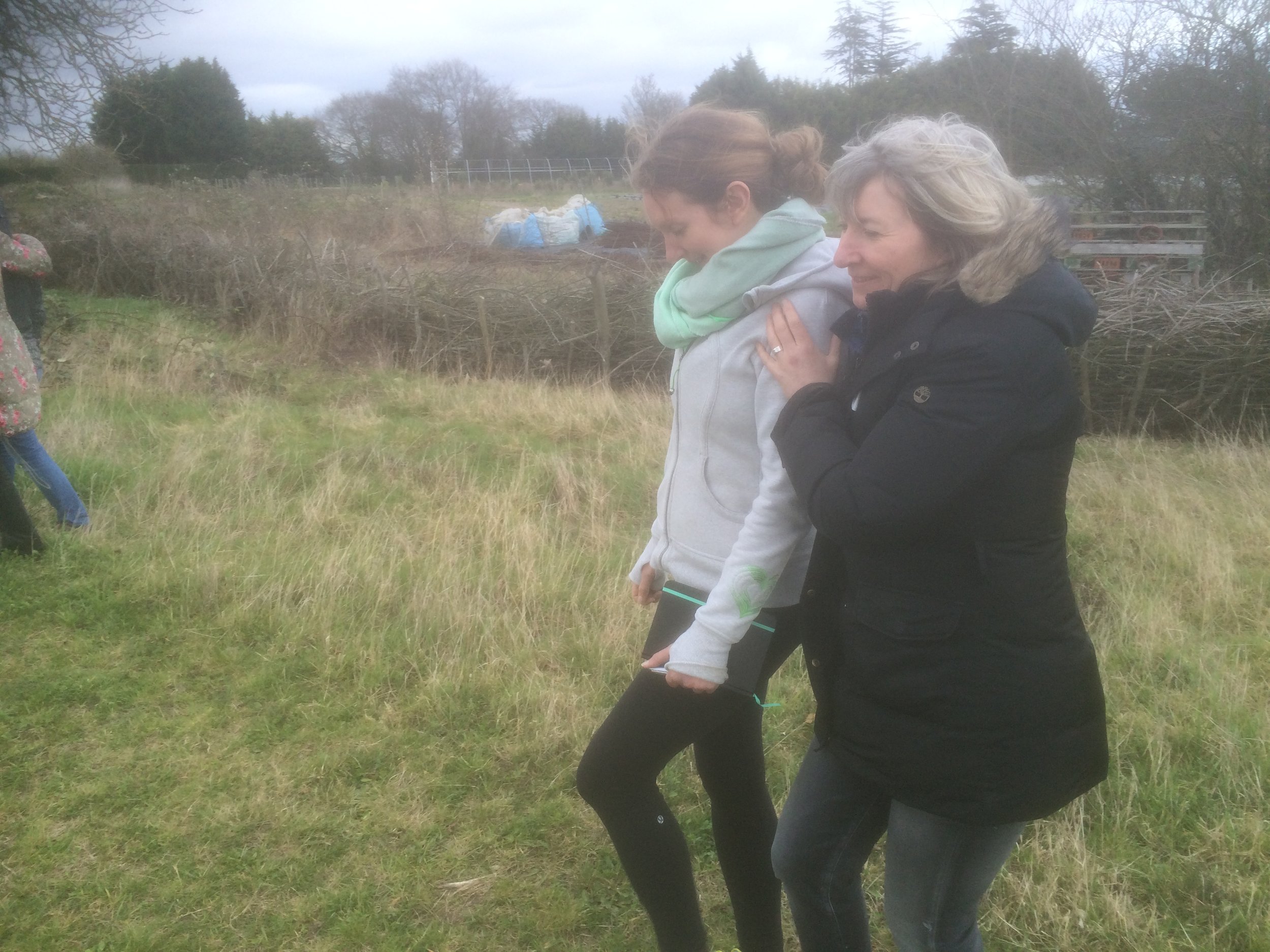Sarah reflecting on the 2-day Permaculture Course
First time novelist, Sarah Kisielowski, joined the Introduction to Permaculture weekend to find out how its principles might apply to creativity and writing.
Permaculture is an intuitive framework for change that reconnects us to each other, the natural world, and ourselves.
This was the opening definition to my weekend at Sutton Community Farm. Our splinter group of five newbies to the sustainable design methodology came up with the sentence and presented it to the group of ten other people taking part in the course. It was pretty spot on for a group of first timers, as our teacher, Luxembourg-born Michel Thill, soon explained.
“The three ethics of permaculture are Earth Care, People Care, and Fair Share,” he said: all of which our definition had covered. Over the weekend we were to discover how these ethics work alongside the principles of permaculture. I was interested to find out how these could also benefit my own writing.
“Permaculture is an intuitive framework for change that reconnects us to each other, the natural world, and ourselves.”
Australian scientist and father of permaculture, Bill Mollison, said, “permaculture uses perennial agriculture to recreate self-sustaining natural eco-systems.” His list of Permaculture principles is extensive, but one of them is to: Create small-scale intensive systems.
Beneficial relationships or systems that work together are paramount to a permaculture way of thinking, Michel explained. I couldn’t help thinking about this as a wider psychological framework extending beyond the realm of the garden. And he confirmed this. Permaculture is based on common sense, it’s intuitive, he told us, and its principles can be applied to almost anything, from the way you interact with your friends and family, to how you organise your kitchen. Systematic thinking is a formula for life.
To help us start thinking about systems, Michel took us outside to a grassy area of the farm. Within an ecosystem there is tension and cohesion, he explained, both of which are necessary to maintain balance. We each chose two members of the group to follow and then all began to move. The aim was to stay equal distance away from our selected pair. As each person moved, everyone else in the group moved too, each adjusting themselves to the two people they were following. It was as if we were connected by rods, like protons and neutrons inside an atom, each with our own charge but connected to the whole group. Then Michel stepped out. To our surprise no one else followed him. But his action showed that inside every system there might be parts that can be removed with little consequence, and those that can’t.
As a writer and reader I use stories to learn, understand and digest information. Tension and tautology in literature is very important. Narrative is made up of many interconnected elements and of course, these must work together as a system to create a successful story.
The next principle we learned about came from permaculture pioneer David Holmgren, who said: obtain a yield. A yield can be seen as a product of labour, a reward for hard work. The Oxford English dictionary defines yield as: to produce or provide/to produce or generate. In our group at Sutton Community Farm we decided that as a Western society we typically measure this in financial or materialistic terms. However, permaculture looks at yield in a more abstract sense, namely as something whose limit is defined by our own imagination.
“The Yield of a system is theoretically unlimited”
The Input/Output process of systematic thinking illustrates this further. Within any system, a small urban garden for example, there is work that needs to be done and waste that results from it. Refining a system to its most efficient mode means that, once up and running, WORK can be seen as input not met by the system. For example, the use of slug pellets within a garden is an unnecessary measure resulting in dead matter and pesticide contamination. WASTE is output not used by the system. One solution could be to swap the slug pellets for some slug-attracting plants in order to entice them away from your main crop.
Permaculture teaches us that the problem is often the solution. That challenges should be used as opportunities for change and growth.
So how could I use these principles and ideas across my own needs and interests? Was there a way I could apply permaculture principles to my writing in order to refine the creative process?
That’s where diversity comes in. Rather than seeing diversity within a system or process as a collection of different single elements, diversity could be seen as the different ways in which elements connect. If you have many diverse elements within a system, but they all form the same connections with each other, there is not necessarily much diversity within the system itself. However, diverse elements all connecting in different ways creates a whole network of unique and interesting connections within a wider system. This is where permaculture finds its strength, and the systems and concepts it is applied to.
Essentially, there is strength in numbers.
Creativity is often thought of as an abstract free-flowing state of being that simply arises while in an inspirational state of mind. However, anyone who works in a creative way knows that, although this would be the ideal, it is rarely the case. Sometimes I sit down to write and nothing happens, inspiration eludes me and I end up staring at a blank page for half an hour before getting up to clean the kitchen. On my most successful days, I give up waiting for the “big idea” and start to pay attention to the smaller ones, the banal and commonplace, noting their importance in the creation of a diverse and interconnected world.
“The Introduction to Permaculture weekend reiterated to me the importance of this sensory approach, and that through observation and experience we can build productive, beneficial systems in all areas of life.”
Thinking about creativity as a process or system, a series of steps that feed into each other, could be a new approach for some. As Michel explained, it’s more of a design approach, which follows a formula: observe, analyse, design, implement, and maintain. Permaculture teaches us that creating a new system consists of 80% observation and only 20% of actual making. We all need to do less and observe more. We need to look, see and notice things, and then make recordings of what we have found.
My first novel recalls the memoirs of a blind man and former gardener. Writing a character bereft of the major sense taught me how to see things differently and experience my environment through the secondary senses of taste and touch. The Introduction to Permaculture weekend reiterated to me the importance of this sensory approach, and that through observation and experience we can build productive, beneficial systems in all areas of life.









